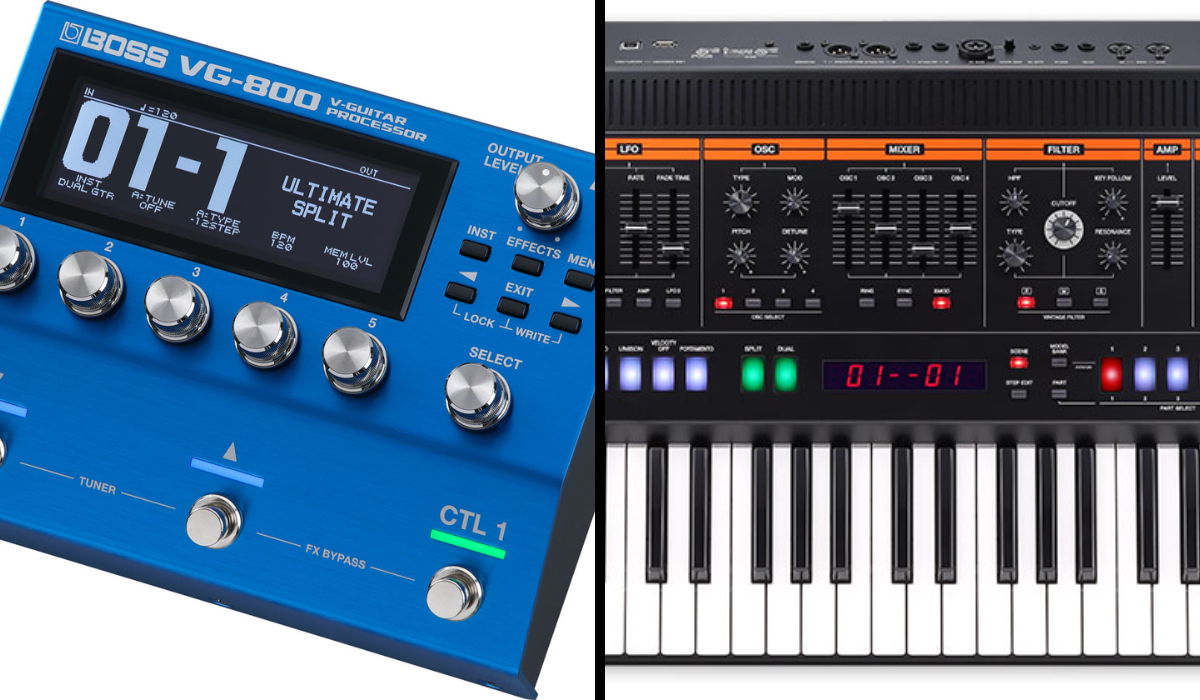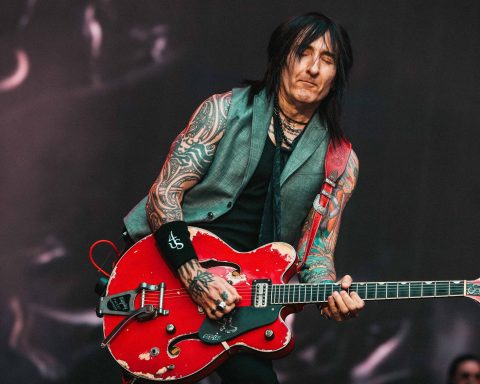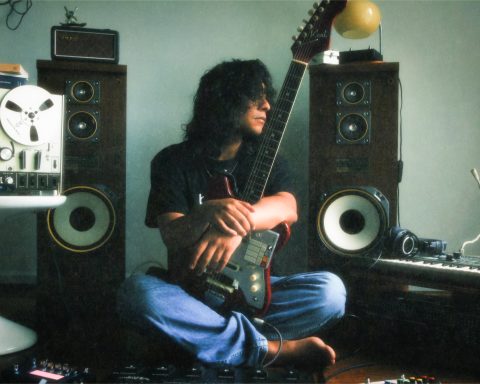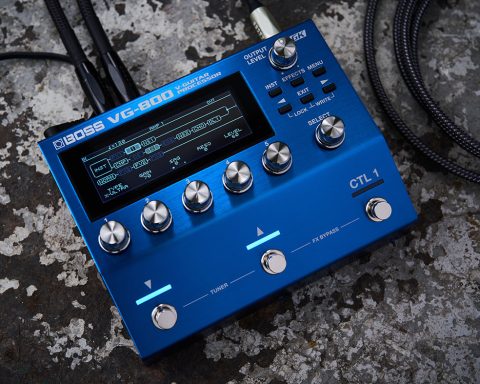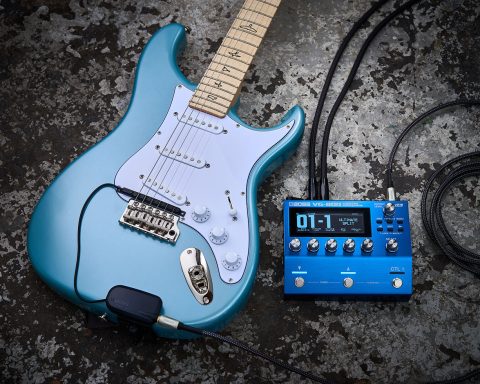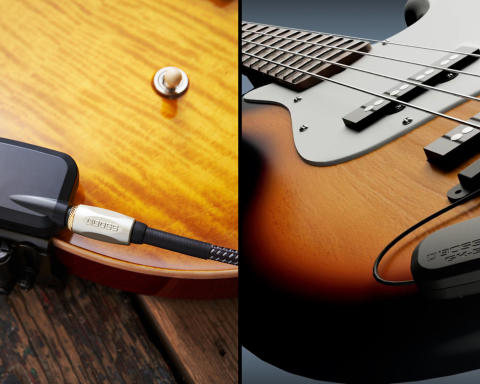Connected to a DAW over USB, the BOSS VG-800 V-Guitar Processor can drive software instruments directly, thus avoiding the hassle and expense of acquiring extra hardware and/or software for the job. This handy built-in feature of the VG-800 utilizes the same cutting-edge tracking system found in the latest BOSS guitar synthesizers—including the GM-800—ensuring fast and precise performance. Learn exactly how to implement this powerful VG-800 capability.
Guitar to MIDI in Your DAW
The BOSS VG-800 V-Guitar Processor features guitar-to-MIDI and bass-to-MIDI functionality. This convenient pitch-to-MIDI output (USB-C® and TRS mini jack) can be used simultaneously with all the key VG-800 features. Here’s exactly how to do it:
Simply select an audio track in your DAW, and you are ready to record the sound of the VG-800. Select a software instrument track and play it via MIDI directly from your guitar/bass without having to change any settings. Using a BOSS BMIDI-1-35 or BMIDI-5-35 (3.5 mm TRS/5-pin DIN) MIDI cable, the VG-800 can also drive a hardware MIDI synth.
"Simply select an audio track in your DAW, and you are ready to record the sound of the
VG-800."
Note that to allow polyphonic pitch bending, the receiving synth should be set to operate in MIDI Mono Mode (MIDI Mode 4) so that each string, in effect, drives its own independent mono synth controlled by a separate MIDI channel. The VG-800 MIDI Output channels are consecutive, and the Basic Channel can be set from 1 to 10.
If the receiving synth doesn’t support Mono mode, then set it to Omni Mode, which forfeits the ability for independent string bending but otherwise works perfectly well. Alternatively, the VG-800’s GK Out jack can be used to interface with compatible products such as the GM-800 Guitar Synthesizer.
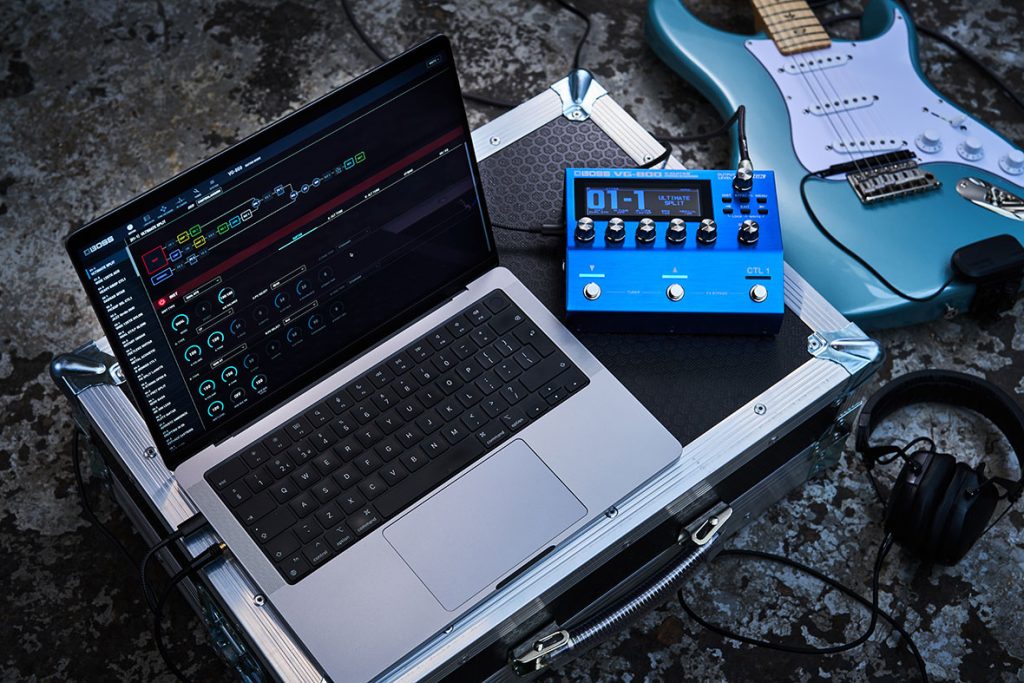
Onstage Application
For live performance, the synthesizer will produce the best results when fed into a wide-range, flat-response amplifier such as a keyboard amplifier or PA speaker, as this will handle the low and high frequencies better than a typical guitar amplifier. The amplifier or sound system can be mono or stereo.
For the VG-800, the choice of amplifier depends on the sounds you will likely use. If you need a lot of acoustic emulations or octave-dropped low strings then, again, a full-range amplifier will give the best-sounding results.
"If you need a lot of acoustic emulations or octave-dropped low strings then, again, a full-range amplifier will give the best-sounding results."
If you intend to use mainly conventional guitar sounds, your amplifier (either via the effect loop return or the main input) will work fine. Pick the best output preset for your amp, then fine-tune the sound using the global EQ of the VG-800. Output settings are available to optimize the sound for a variety of amplifier types, including guitar stacks and combos. Remember, the VG-800 works with mono and stereo amplifiers and sound systems.
Volume and Expression
For the player who frequently uses the guitar’s volume control, adding an expression pedal to control the signal level before the amp models will give the same response, allowing the amplifier models to respond naturally to the guitar volume. Alternatively, an expression pedal can be placed after the amplifier models if the requirement is only to control the overall volume.
An expression pedal or analog volume pedal is also best for handling the synthesizer’s volume, allowing it to fade in and out behind the guitar as required.

